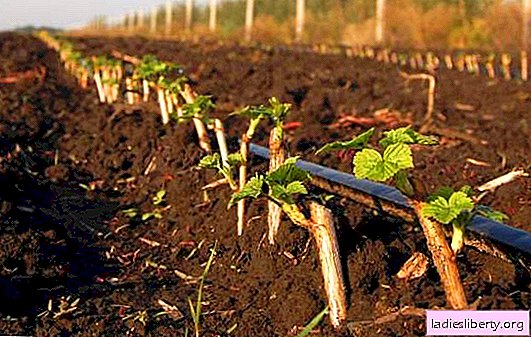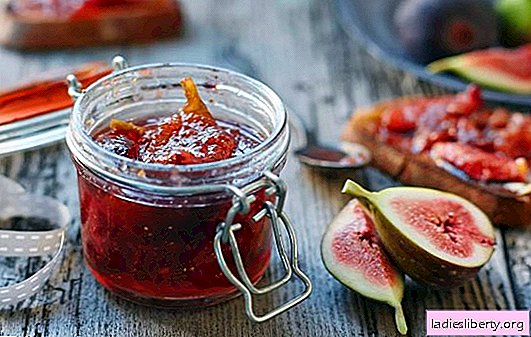
Jasmine (Chubushnik) is one of the most popular plants grown in our climate zone.
It grows rapidly, is quite resistant to frost, is not afraid of shading and transplanting to a new place.
His secret of popularity lies in the stunning aroma that beautiful flowers exude for more than two months, as well as in the fact that jasmine is simple and unpretentious in its care.
Choosing a landing place and planting material
Jasmine is able to develop well in any soil, but the plant shows the best decorativeness in fertile soil. The ideal soil composition is considered to be a mixture of humus, sand and sod land in a ratio of 2: 1: 3. In addition, when planting jasmine in open ground, the introduction of 30 g of nitrophoska is recommended.
Jasmine does not tolerate waterlogging, so it should be planted on a hill or provide good drainage. As a drainage layer, you can use broken brick, gravel or small pebbles with coarse sand. Its height should be 15-20 cm.
Despite the fact that this shrub normally tolerates shade, it will bloom profusely and for a long time only in sunny, not fully open places. When planting several plants at a time simultaneously, you need to maintain a distance of 1 meter between them. For a better and faster engraftment in a new place before planting, it is recommended to moisten the jasmine roots in a mixture of mullein and clay.
Jasmine: Planting
You can plant young jasmine in the open ground both in spring and autumn. But it is worth noting that plants planted in early spring take root faster and better.
Jasmine Landing:
1. Dig a hole in the selected place with a depth of 40-60 cm and a diameter of up to 60 cm.
2. At the bottom of the pit, place a drainage layer, and then a small part of the soil mixture and nitrophos.
3. Gently evenly distribute the jasmine roots in the pit and cover them with fertile soil. Try not to deepen the base of the shrub by more than 2-3 cm, otherwise it will rot.
4. Tamp the ground slightly at the base of the plant.
5. Pour jasmine liberally with 15-20 liters of water.
6. Paste mulch around the tree’s near-stem circle for less evaporation of moisture.
Jasmine care
Jasmine in the care is very unpretentious, but it can achieve greater strength and decorativeness when performing the following activities:
• periodic loosening of soil around the bush;
• the introduction of phosphate-containing, organic and mineral fertilizers to increase plant immunity and abundant flowering;
• pinching the branches of a bush to give the crown of the plant the correct shape;
• removal of weeds and old inflorescences;
• making mulch;
• timely soil moisture.
As organic fertilizers, it is recommended to use slurry. For its proper preparation, dilute the manure with water in a ratio of 1:10 l for one bush. Organic feeding should be done once a year in the summer.
For fertilizing with mineral fertilizers it is necessary to prepare the following composition: in 10 l of water add 15 g of urea, 15 g of potassium and 30 g of superphosphate. Pour the resulting mixture under a bush of one, maximum two plants. All top dressing should be done only a year after the planting of jasmine in open ground.
Rejuvenation and formation of the crown of garden jasmine
In order to give the jasmine bush the correct symmetrical shape, it is necessary to regularly conduct its forming pruning.
To do this, in the spring during the growing season of the plant, cut strong healthy branches with a sharp knife or garden pruner and cut the weak ones to the bottom.
Such pruning will accelerate the growth of weak branches and slow down the growth of strong ones too fast.
Over time, the mock orange needs rejuvenation. This is due to the fact that the old branches become too long and bare, which deprives the plant of its former decorativeness.

Stages of anti-aging pruning:
1. In the spring, cut 4-5 branches at a level of 40-50 cm, and remove all other stems to the base.
2. Spread all fresh cuts with garden varieties to heal and protect the shrub.
3. In the summer, monitor the timely watering and top dressing of jasmine.
4. Spread mulch compost fertilizer.
5. Remove the shoots that have grown from sleeping buds, leaving several stronger branches on each old stem. They will be the basis of the renewed garden jasmine shrub.
6. After a year, the plant will acquire the proper appearance, and after 3 years you can enjoy its abundant flowering.
Jasmine Garden: preparing for winter
An adult plant does not need special measures to prepare for the winter. Jasmine easily tolerates cold, and shoots damaged during the winter are restored in the spring during the forming pruning.
But a young shrubbery bush can not tolerate frosts, so it is recommended to prepare it for winter during the first 2-3 years. For shelter use light fabric material and fasten it with ropes. And the stem ring is covered with compost, sawdust, pine needles or mulch to prevent freezing of the roots.
Breeding
The most popular and reliable way to propagate garden jasmine is the division of young cuttings. To do this, in June-July in the morning, cut an oblique shoot under the lower kidney. He should be strong, but not fat. Remove the foliage from below, and at the top, make a straight cut so that the length of the stalk is 10 cm.

During the day, soak the stalk in a special solution - root, and then plant it in a greenhouse or under a plastic bottle. The soil should consist of sand and peat in a ratio of 1: 1. You can deepen a young shoot by no more than 5 cm.
For good survival of the handle, it is necessary to provide regular ventilation and spraying. Young shoots in 3-4 weeks will start up the kidneys, and then build up the root system.
For propagation by layering, the strongest young shoots are used. Below, under the first kidney, it is necessary to drag the branch with wire, and tilt the shoot to the ground into the groove and sprinkle with sand and peat.
Propagation by woody shoots is carried out in early spring with the onset of heat. To do this, in advance in autumn, it is necessary to prepare shoots 13-18 cm long. At the bottom, make a straight cut, and at the top - oblique. Shoots in winter can be stored in a cool place or outside in a box, sprinkled with sand.
The most difficult and long way is seed propagation. The division of the root coma is carried out in mid-autumn for the rapid propagation of jasmine.
Diseases and Pests
Due to the fragrant smell, mock-ups are rarely attacked by pests. But sometimes, due to improper care and drying out of the soil, jasmine can become sick, and spider mites, aphids, weevils, mealy worms or scale insects can settle on its crown. To combat these pests, the plant is washed with a solution of laundry soap, and then they are treated with fungicidal preparations.

When the jasmine foliage deforms and falls, it is necessary to increase humidity and increase watering. If these measures were not effective, it is recommended that the shrub be transplanted into a slightly shaded place without direct sunlight.
If the buds do not bloom for a long time, jasmine must be transplanted to a brighter place. A sharp darkening of the buds indicates too dry and warm air.











